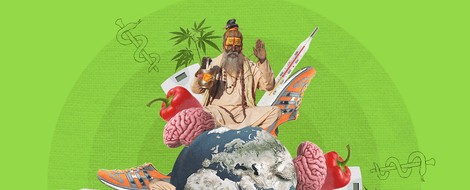Your podcast discovery platform
Curious minds select the most fascinating podcasts from around the world. Discover hand-piqd audio recommendations on your favorite topics.

piqer for: Health and Sanity Boom and bust Climate and Environment
Melissa Hutsell is an award-winning freelance journalist with a deep rooted passion for both community and international journalism. She was born and raised in Northern California, and has lived, studied, worked, and traveled in more 20 different countries. Melissa holds a Master's degree in Global Journalism from City University London, as well as degrees in Journalism and Globalization from Humboldt State University. Though she covers various topics as both a writer and editor, she specializes in business and cannabis journalism.
This Is How Cannabis Can Help Curb The Opioid Crisis
The leading cause of accidental death in North America is drug overdose. Since 2016, both the US and Canada have declared public health crises due to the startling increase in overdose-related deaths.
Perhaps the most shocking figure is that more than 63 percent of overdoses were caused by opioids in the US in 2015 alone.
As these numbers continue to rise — despite the introduction of addiction and treatment centers across both countries — many are pointing to cannabis as a solution. But, why?
In the study “Rationale for Cannabis-based Interventions in the Opioids Overdose Crisis” author Philippe Lucas notes that in the US states that have legalized medical cannabis, overdose rates have dramatically decreased — a fact that can’t be ignored.
Access to medical and recreational marijuana programs significantly benefit public health; multiple studies show cannabis programs are linked to the reduction of opioid use.
While Lucas recognizes that cannabis is not the ultimate panacea, it has an undeniable role to play in curbing opioid addiction due to the “substitution effect”.
Chronic pain is one of the main reasons people use opioids; the same goes for cannabis. Marijuana is viewed a safer, less addictive, and effective alternative; substituting cannabis for opioids therefore minimizes harm and significantly reduces the risk of dependence on licit and illicit drugs.
This realization has become more and true every day. For more details about how exactly cannabis can help to replace opioids (including information about their pharmacodynamics properties, the substitution effect, etc.), take a look at Lucas’ paper, which brings multiple studies into account.
